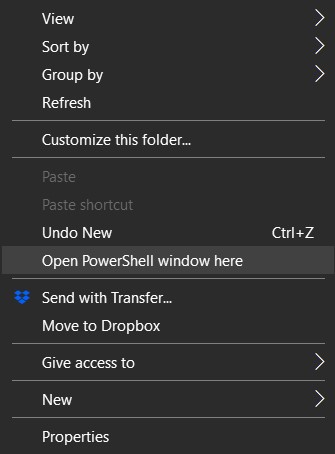Microsoft Windows did some minor overhauls to its various applications. One among them was the File Explorer. After getting a much-needed revamp, it’s finally back to being among its old shine and glory. Moreover, it has also been blessed with some useful tips, tricks, and handy shortcuts that you might not be aware of. Therefore, in this guide, we have listed some of these File Explorer Shortcuts that you should start using right away. Also, take note of these steps to create custom shortcuts for apps on Windows.
Windows File Explorer Shortcuts
Among the changes introduced in the File Explorer, the Favorites section on the left has been replaced with Quick Access. Windows stores the frequently accessed folders over to that section. You could also pin any of your most-used folders there. Apart from that, Microsoft has also integrated OneDrive in the Explorer menu, beginning with Windows 10. Likewise, File Explorer also stores some useful shortcuts to make your work pretty easy. Here are some of the most important ones. On that note, check out these website shortcuts to access your favorite sites faster.
Open File Explorer from Anywhere
You could use the Windows+E shortcut to open File Explorer from anywhere on your Windows 10 screen.
Access File Explorer’s Ribbon
The ribbon in File Explorer holds some basic yet useful functionalities. These include the usual Cut, Copy, Paste, Delete, Rename Properties feature. Apart from that, it also allows you to customize the View option or the way you make file selections. Use Ctrl+F1 to enable or disable the File Explorer’s Ribbon.
Open a New File Explorer Window
If you already have File Explorer opened and wish to open a new window in a different section, take the help of the Ctrl+N shortcut on your Windows PC.
Close the Current Window
The said functionality could be performed via the Ctrl+W File Explorer Shortcut.
File Explorer Shortcut to Create a New Folder
To create a new folder inside the File Explorer, use the Ctrl+Shift+N shortcut on your Windows PC.
File Explorer Directions Shortcut
Use the Alt+Right Arrow to view the next folder, Alt + Left Arrow (or the Backspace Key) for the previous Folder, or the Alt + Up Arrow to view the folder in which the current folder is contained in.
Use this File Explorer Shortcut to Jump to Search Box
There are quite a few ways to directly access the Search bar. You could use the Ctrl+F, Ctrl+E or the fn+F3 keys.
Focus the Address Bar
Address Bar refers to the location that shows the location of the file you are currently associated with. To try out this shortcut, use the Ctrl+L, Alt+D, or fn+F4 keyboard shortcut.
Read also: 10 Google Chrome Keyboard Shortcuts
Maximize the File Explorer Window
Use the fn+F11 key to maximize the File Explorer. Clicking the same key again minimizes it.
Permanently Delete File
You could permanently delete any file or folder from the File Explorer window using the Shift+Del hotkey. If you use this File Explorer shortcut on your Windows PC, then the file won’t be stored even in the Recycle Bin. For that, you only have to press Delete.
File Explorer Shortcut to Restore the Last Deleted File
To restore the last deleted file in the Explorer, use the Ctrl+Shift+Z. It only works for the file deleted via the Delete key and not the Shift+Delete shortcut key. Also, don’t confuse it with the usual Undo functionality that is carried out via the Ctrl+Z shortcut.
Redeletes the Last Restored File
If you have restored any file by mistake, take the help of the Ctrl+Shift+Y shortcut. In simpler terms, it just reverses the action performed by the one mentioned above.
File Explorer Shortcut to Reveal the Hidden Menu
If you press the Shift Key and right-click anywhere inside the File Explorer window without selecting any file or window, you could try out the hidden context menu. This also stores the all-important “Open PowerShell Window here” option.
So these were all the important File Explorer Shortcuts for your Windows PC or laptop. Which one stands as your favorite? Let us know in the comments section below.
Read next: How to Speed Up Menu Animations In Windows



